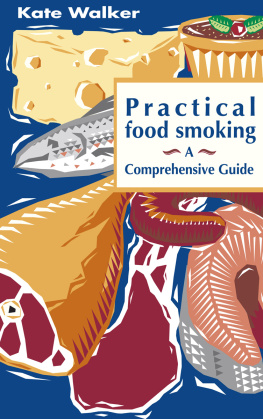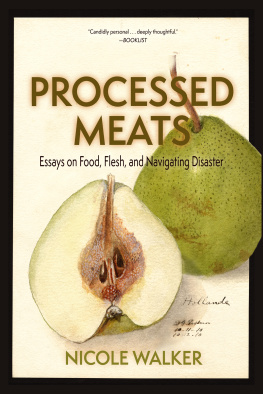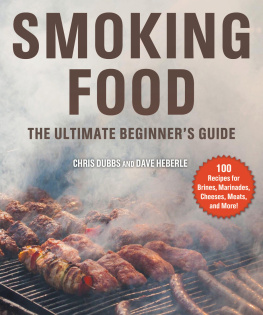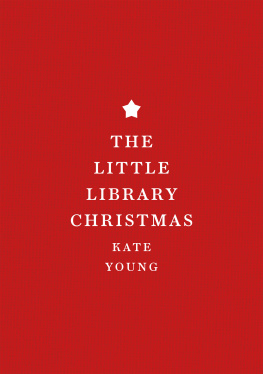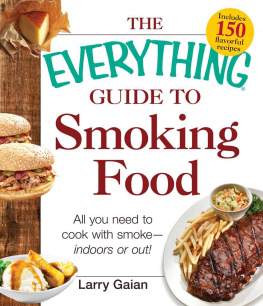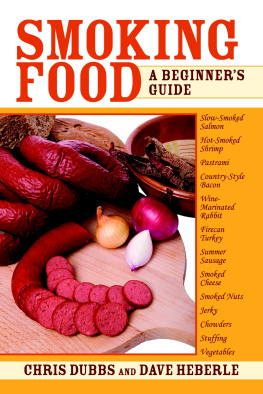Kate Walker - Practical Food Smoking
Here you can read online Kate Walker - Practical Food Smoking full text of the book (entire story) in english for free. Download pdf and epub, get meaning, cover and reviews about this ebook. year: 2011, publisher: Perseus Books, LLC, genre: Children. Description of the work, (preface) as well as reviews are available. Best literature library LitArk.com created for fans of good reading and offers a wide selection of genres:
Romance novel
Science fiction
Adventure
Detective
Science
History
Home and family
Prose
Art
Politics
Computer
Non-fiction
Religion
Business
Children
Humor
Choose a favorite category and find really read worthwhile books. Enjoy immersion in the world of imagination, feel the emotions of the characters or learn something new for yourself, make an fascinating discovery.
- Book:Practical Food Smoking
- Author:
- Publisher:Perseus Books, LLC
- Genre:
- Year:2011
- Rating:3 / 5
- Favourites:Add to favourites
- Your mark:
- 60
- 1
- 2
- 3
- 4
- 5
Practical Food Smoking: summary, description and annotation
We offer to read an annotation, description, summary or preface (depends on what the author of the book "Practical Food Smoking" wrote himself). If you haven't found the necessary information about the book — write in the comments, we will try to find it.
Practical Food Smoking — read online for free the complete book (whole text) full work
Below is the text of the book, divided by pages. System saving the place of the last page read, allows you to conveniently read the book "Practical Food Smoking" online for free, without having to search again every time where you left off. Put a bookmark, and you can go to the page where you finished reading at any time.
Font size:
Interval:
Bookmark:

I find this book extremely useful. It has a wonderfully comprehensive coverage of both hot and cold smoking, the latter being treated very well (particularly in comparison with other books Ive reviewed on this topic). Raw material preparation, curing times and methods are fully covered.
For the UK/European reader, this has the appropriate range of meats and other items that you would want to smoke. Theres a very obvious emphasis on setting up a smoking business, which sounds like it might alienate some readers, BUT this means that it is scrupulous in dealing with issues of, for example, food safety For recipes and methods for curing and smoking European foods, this is a great book that Id recommend even for beginners.
Review by AG Whittaker on Amazon

Contents
Introduction
D URING RECENT years there has been a revival in the forgotten rural arts and a striving by some for self-sufficiency. Revolutionary changes have occurred in our society more women go out to work, and with the increased pressures of coping with two jobs, the traditional skill of food preparation is no longer considered essentially a task for the female. The increase in the number of cars on the road have made it necessary to restrict parking outside high-street shops. Shopping is now being done less frequently and usually at one location, the supermarket, where ample parking is provided.
This rise of the supermarket represents the levelling of food standards to a bland mediocrity where easily prepared dishes are available, and where quantity and continuity of supply are paramount. Unfortunately, it has also introduced food production practices which benefit the shareholder rather than the customer who has to buy what is available even when he or she knows that the produce may not be as wholesome as is desired.
Problems in the poultry and meat industries have stimulated an increased interest in real food and the thinking consumer is demanding access to facts about food production. The result of this is that a gradual change in eating habits is now emerging. Convenience foods are now found wanting and are being relegated to their rightful place of excellent emergency stopgaps. Accordingly, with interest in some of the more traditional food preservation crafts now rising, the process of food smoking, where an enhanced flavour is imparted to food by exposure to low temperature smoke in a natural manner, is becoming more popular at home and in business.
The fact that food cannot be smoked if water retention chemicals have been included in the animal feed is a safeguard against harmful substances being present and building up in the animals flesh texture. The reason smoking shows up the presence of harmful additives is because salt draws out the moisture released by the process of osmosis, and this can be reversed to increase the water content and, consequently, the selling weight of the produce. There is a legal requirement to declare the water content if it has been added, but if this is brought about by doctoring the animals feed, then no such declaration need be made. Some of the highest water contents are present in food imported from some continental countries.
The customer is becoming more aware of some of these facts, and greater demand for choice is bringing a further change in the structure of supermarkets where we now see counters springing up to cater for unwrapped produce. The rise of the American-style shopping mall, within which many smaller specialist shops are to be found, is also becoming a feature of todays urban environment. This represents an encouraging swing away from mindless buying, and provides a challenge to the producer with an eye on quality. Profit is a necessary part of any business, but not to the extent that the customer is duped. It will hopefully mean we can expect fresher food if buyers find their suppliers locally and deliveries become more frequent rather than distributing from central collection points.
I have written this book because there are many who would like to smoke food, but do not know how to go about it. The subject is complex and absorbing, and always full of new facts as more experimental work is done with a wider range of foods. It is unfortunate that little distinction is given to the labelling of smoked food to assist the public in the recognition of the difference between dyed, or artificially smoke-flavoured produce, and food properly smoked over a period of time where a combination of salt and cold smoke produces a better flavour and extended shelf-life.
This question of shelf-life is interesting because the image of smoked food being long-lasting and not requiring refrigeration is a leftover from the days when smoking was done for preservation. The method used is, in fact, the same for both preserving foodstuffs and giving enhanced flavour, but it is only the latter in which we have an interest today.
The methods given in this book therefore apply for preservation as well as flavour, but purely for the purpose of preservation a longer time in brine to increase the salt percentage is needed, as well as longer time in the smoker to reduce the overall moisture content. For an in-between requirement when the food is intended for reconstitution, salt levels are increased to allow greater transportation time, but not to the point that the foodstuff is completely dried out.
Anyone with an interest in the flavours of food should find something of value in this book which will serve not only the domestic household, but also the small business as well and to this end, I have looked at the commercial aspects of producing smoked food in order to give some guidelines for those who may wish to take their interest further.
Kate Walker
Chapter 1
A Brief History of Food Smoking
T HE HISTORY of curing and smoking goes back some way and there is not a great deal known of how it all actually began. A lot of valuable information has been lost because early methods and recipes were handed down verbally, and as the need for people to preserve food has decreased, many facts have disappeared.
Food is necessary to survive, and mans instinct has always been to store enough food to last over the dark, cold days of winter. Primitive man, after bringing in meat to store for the winter (the autumn kill), probably hung his meat simply to prevent animals devouring it, and then found that those joints exposed to the smoke of his fire remained in better condition. We know that once timber and stone houses were built, the rafters were used for hanging food because the smoke from the fire drifted upwards to the roof outlet. Possibly, too, coastal people might have become known as having better winter meat than those living inland because they used sea water rather than river water in which to wash their kill.
An interchange of provisions between these peoples may have resulted in a communal knowledge for meat and game to be kept in salt for quite long periods, then hung up in the roof space above the fireplace.
Nowadays, we are no longer in a position to maintain this type of store, but with rising costs and the improvement in freezing techniques, more families are buying foodstuffs in bulk, when prices are lowest, and then storing this in a deep-freeze for future use.
Some cuts can easily be cured and smoked before freezing but the difference today is that food is not being cured and smoked as a means of preseravtion, but rather as an enhancement to flavour. This fact in some way influences the process because our modern, sophisticated palates would reject the very salty and dried texture of ancient mans winter stores. Having said that, it must be understood that although smoking imparts a longer shelf-life, it is still necessary to treat smoked products as raw food, still requiring refrigeration or freezing for storage, unless the products have been smoked specifically for preservation.
Font size:
Interval:
Bookmark:
Similar books «Practical Food Smoking»
Look at similar books to Practical Food Smoking. We have selected literature similar in name and meaning in the hope of providing readers with more options to find new, interesting, not yet read works.
Discussion, reviews of the book Practical Food Smoking and just readers' own opinions. Leave your comments, write what you think about the work, its meaning or the main characters. Specify what exactly you liked and what you didn't like, and why you think so.

